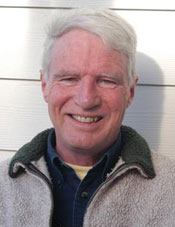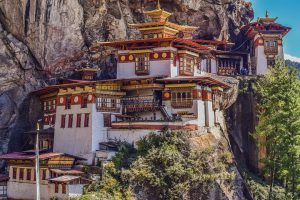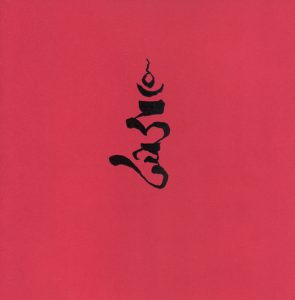Sunday
Featured StoriesFarewell Richard Arthure
Reflections upon the day of Sukhavati for Kunga Dawa
by Acharya Marty Janowitz
 I find myself awake in the pre-dawn this morning suffused with thoughts and feelings about Kunga Dawa, Richard Arthure, the first Western devoted heart-son of Chögyam Trungpa, and now an almost unrecognized early bead in the still unfolding, intertwined mala of the lineages of the Trungpa, Kagyu-Nyingma and Shambhala….
I find myself awake in the pre-dawn this morning suffused with thoughts and feelings about Kunga Dawa, Richard Arthure, the first Western devoted heart-son of Chögyam Trungpa, and now an almost unrecognized early bead in the still unfolding, intertwined mala of the lineages of the Trungpa, Kagyu-Nyingma and Shambhala….
I know Kunga as the first person I spoke to in the spring of 1970 when calling Tail of the Tiger (now Karmê Chöling) to explore a visit with my three roommates: Karl Springer, Chuck Lief, and Arlo (now Alan) Schwartz. Thinking him Tibetan because of the name provided in a letter of introduction from Samye Ling, I thought his English surprisingly good although hard to decipher, it being my first telephonic connection with someone from Oxford, UK. Upon meeting him face to face in Vermont some days soon after, I found him the one person among the ragtag band of settlers from Scotland who I could make sense of as a ‘spiritual’ person–soft spoken, soft humor, articulate, and without any strong personality affectation. He was clearly the spiritual and meditative leader of the crew. Trungpa himself was not yet there, and if not for Kunga’s thoughtful presence I at least would likely have fled, rather than decide to move in with my friends for the summer. During that short weekend, Kunga was my/our first instructor in meditation, the leader of daily sing-song mantra chants, and a thoughtful articulator/exponent of dharma.
It soon became clear, especially after moving in and meeting Chögyam Trungpa, that Kunga was the guru’s first student: prime and close. Witnessing his quiet devotion and attentiveness, and Rinpoche’s intimate reliance on him to be the visible presence of what a ‘student’ might be, offered me a first glimpse of what a dharma and ear-whispered lineage could be about. That first summer Rinpoche offered seminars on two lineage focused streams of teaching: The Jewel Ornament of Liberation by Gampopa, and The 100,000 Songs of Milarepa. As mystifying as some of this was, describing an intensity of practice, austerity and devotion way beyond my comprehension, I ‘got it’ (or at least a bit of it), by seeing what lineage devotion and transmission looked like through the visible images of Kunga sitting and conversing quietly at his guru’s knee. He was, as I recall, not in any way showy or puffed up, but rather seemingly always ready to listen, receive, and fulfill. He was kind to me as a complete novice, responding when I found voice for questions, but not giving me the feeling that he ‘knew’ while I didn’t.
We also soon learned that it was Kunga who travelled with Rinpoche, most significantly as his attendant, secretary, and scribe on his epochal journey back to India, Sikkim, and Bhutan. Kunga was there for Rinpoche’s retreat at the cave at Taktsang where Padmasambhava himself meditated in order to subdue obstacles to presenting the buddhadharma in Tibet. In that retreat, the Sadhana of Mahamudra was revealed. He and Rinpoche co-created its English language version. As many will know, this sadhana reflected a turning point in Rinpoche’s presentation of the buddhadharma. It arose at a moment when Rinpoche was amidst a turbulent point in his own life: contemplating his readiness to break through obstacles, leave behind the safety of robes, and discover how to present the Buddhist teachings in the West.
The Sadhana of Mahamudra was the first practice that the Vidyadhara encouraged his students to do, and it was instructed and guided by Kunga. As strange as it seemed, with its vivid and unsettling images of what we learned were samsara and enlightened mandala, it still became a binding factor for our community. It became for me and I know others a first window into the perils of spiritual materialism. To this day, it provokes and encourages me to sense the possibility of overcoming obstacles in my own and this era’s degraded self-centered tendencies. In short, Kunga was for me and some of my earliest lineage compadres the accessible person who helped us step through the threshold into this ungraspable and twisty life path of dharma and lineage.
I cannot explain or frankly understand Kunga’s own life path since those early years. I know it had more than its own fair share of turbulence and challenge. I do not know the ins or outs of how and why he moved from the center towards the fringe (at least visibly) in our mandala. I do know that his fundamental devotion to his guru and lineage remained intact. Especially in recent years he was at least occasionally teaching, traveling, and authoring beautiful poetry—and sharing some of his unique stories of time and connection at the feet of our guru. I also came to know him anew through the eyes of one of his sons, Adam, who became a friend and mentee for me in Halifax—and who clearly loved him through thick and thin (both of them having had plenty of each). I saw Kunga rarely in recent decades, always at some unanticipated intersection in Boulder. Now that he has died, I find myself holding some regret that I never thanked him directly for his offering of a doorway so important—not just for me, but for us, and for Rinpoche’s work and lineage.
I believe it is important to remember how we got here (wherever that is),and how lineage actually works: passing from teacher to student to student to student through instruction, transmission, example, kindness, and offering. We do talk about these principles, but don’t get to see them that often in simple action. My images of Kunga are a reminder that I hold dear, especially when I am snared by my own puffed up tendencies. I am so glad that in my life, such an offering was available to me at a moment when I was available for it.
I offer these memories with a tender heart of appreciation.
Acharya Marty Janowitz became one of the Druk Sakyong’s closest students. Acharya Janowitz helped shape the Shambhala community’s Kusung arm, teaching forms, government, and society; he has taught a wide range of programs over many years, and has been tremendously active in the Nova Scotia community.








Jun 17, 2018
Reply
Thank you Marty this is really beautiful and touching!
Jun 15, 2018
Reply
Thank you for giving voice to this gratitude.
Jun 15, 2018
Reply
Thank you Acharya Janowitz for writing this moving tribute. I’m grateful to have met Kunga Dawa who was an inspiring presence. I also thank YOU for being a beautiful doorway for many of us as well.
Jun 15, 2018
Reply
Much appreciation for your timely and very personal tribute to Kunga Dawa, Mr. Janowitz. I’m so very glad his brief interview appeared in part of Ms. Demetrakis’ “Crazy Wisdom” film for the benefit of posterity, along with several other of VCTR’s early UK/Western students. Also interview, etc., on The Chronicles. EMAHO
Jun 15, 2018
Reply
Thank you Kunga for your work on the Sadhana,
a prayer from Shing Kam in the intermediate state:
“Awakened ones of the ten directions […] Please bring the full force and weight of your blessing so Kunga Dawa is able to develop complete confidence in basic goodness. Thus, may he instantly attain awakenment. May his realization naturally return him to the cosmic mirror, where he is inseparable from the great being Shiwa. If this is not possible, assist Kunga in finding the way to the pure land of Shambhala, ….”
Jun 15, 2018
Reply
Thank you very much..
Jun 13, 2018
Reply
Beautiful. ..thank you for printing this lovely tribute by Marty Janowitz.
Jun 11, 2018
Reply
Moving and thoughtful tribute. Thank you, Acharya Janowitz.